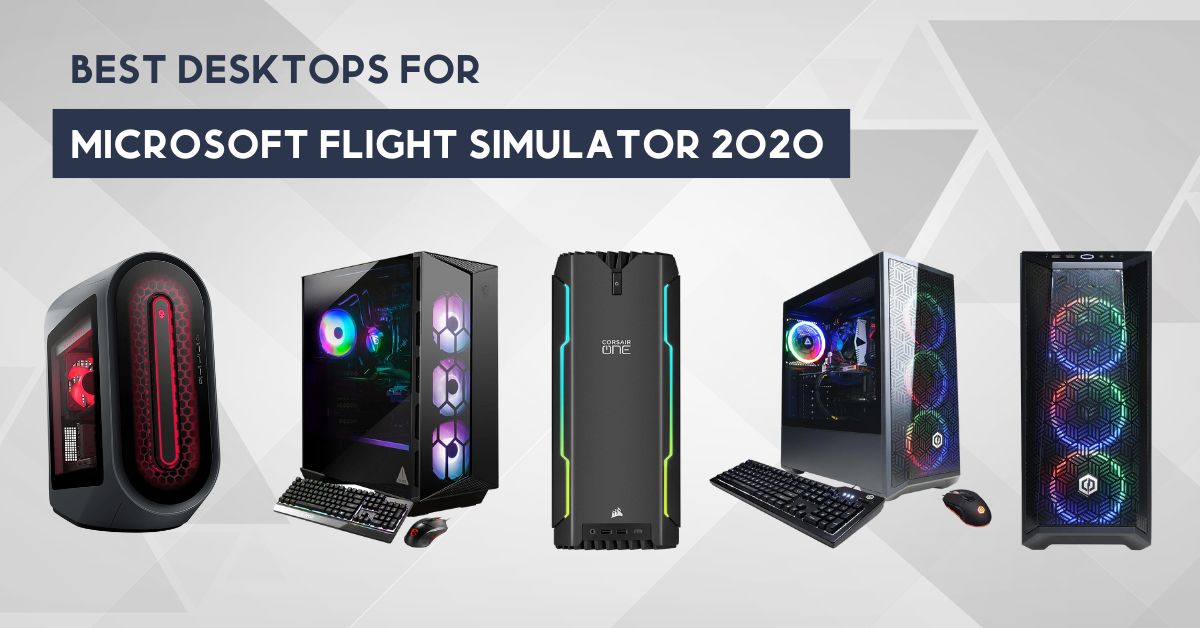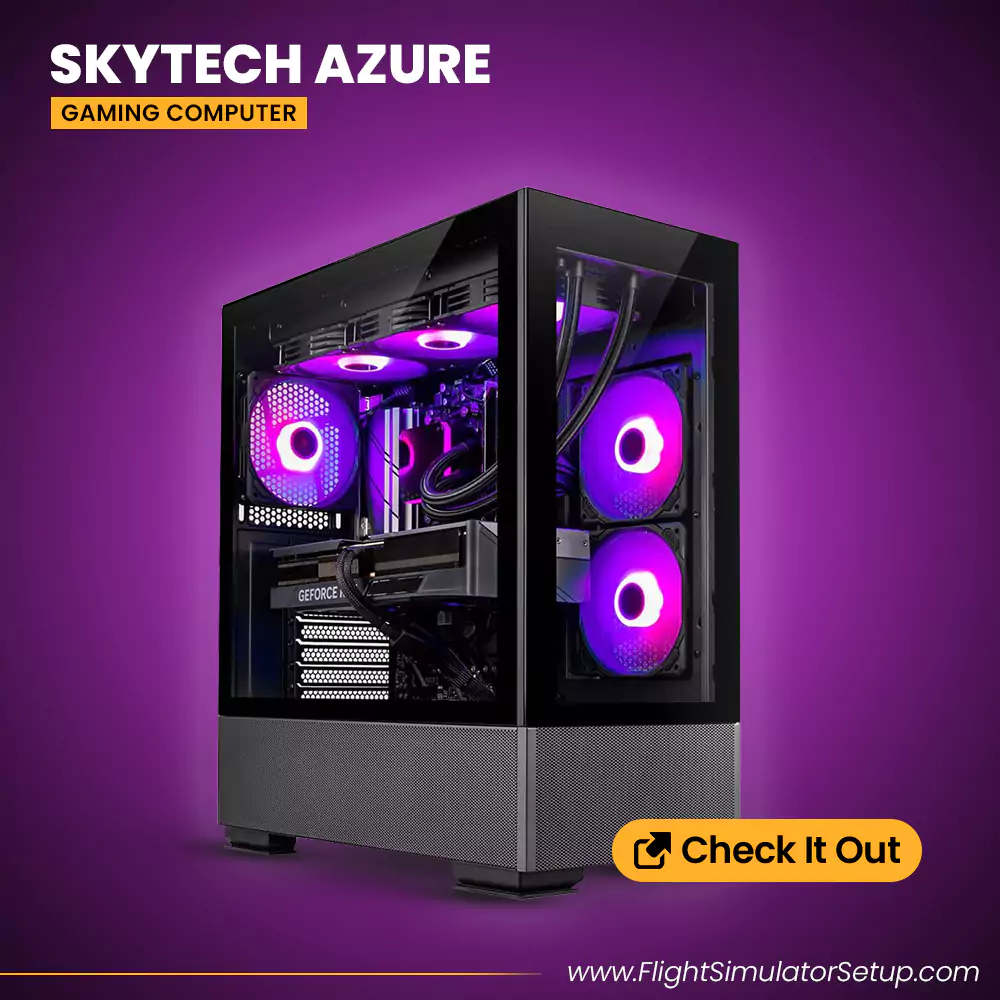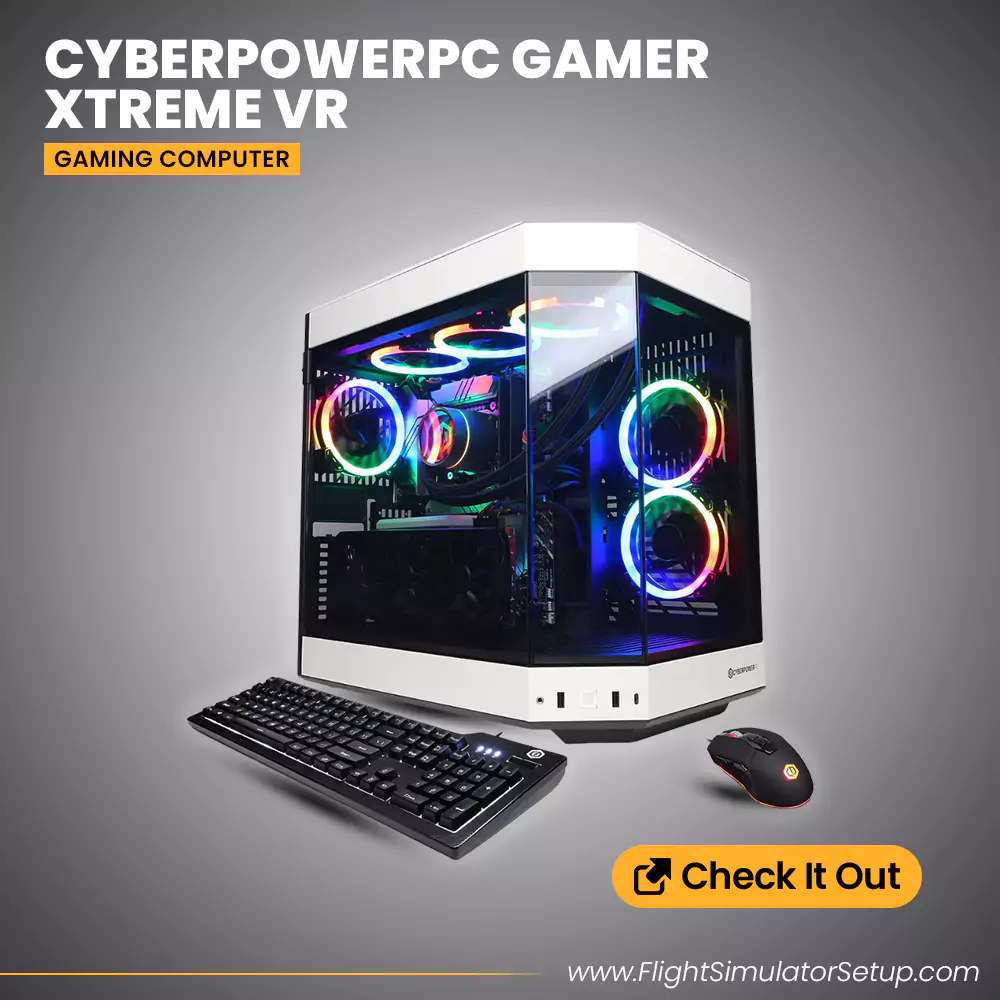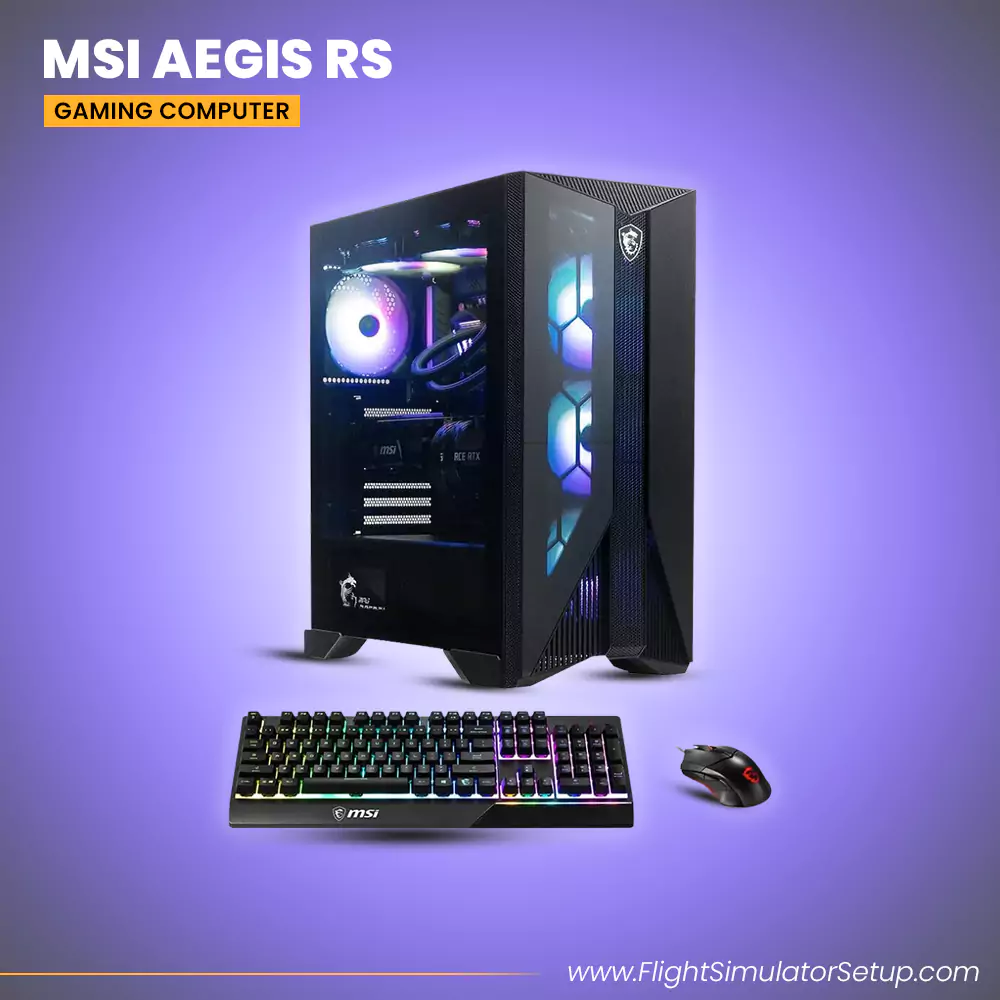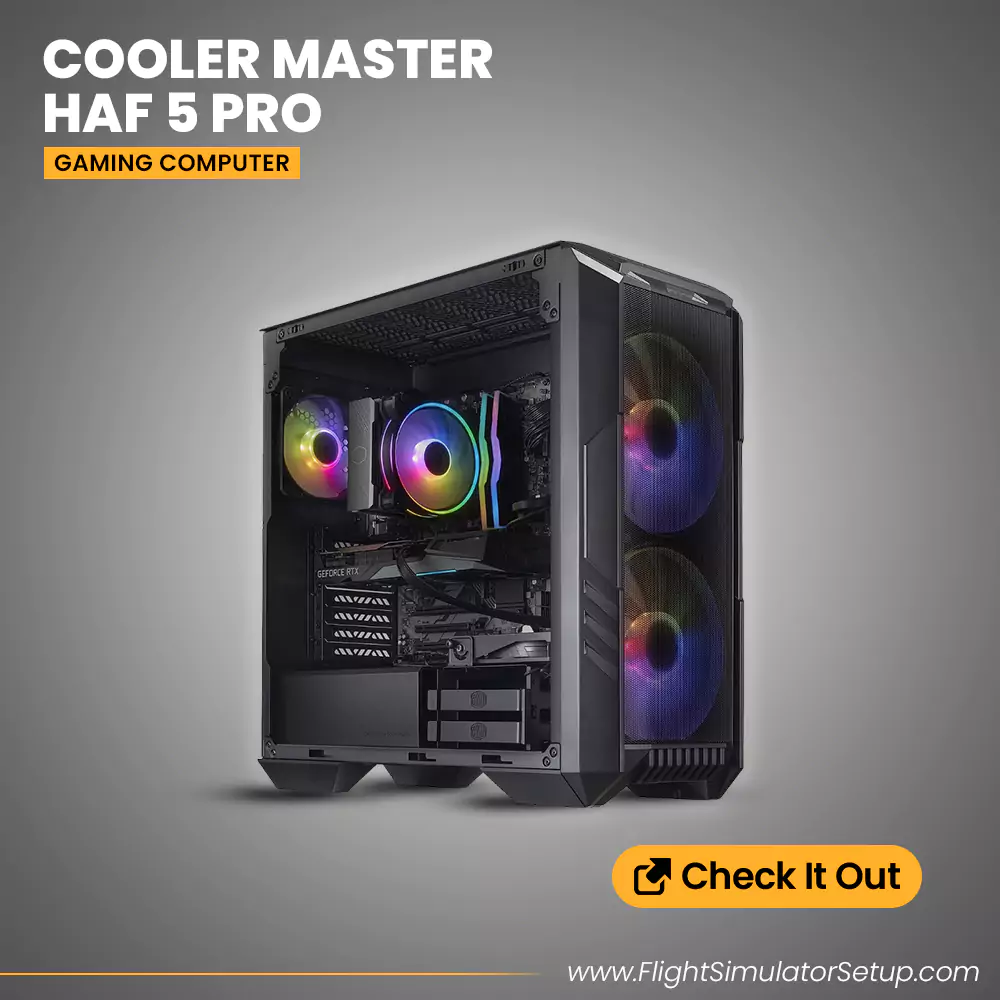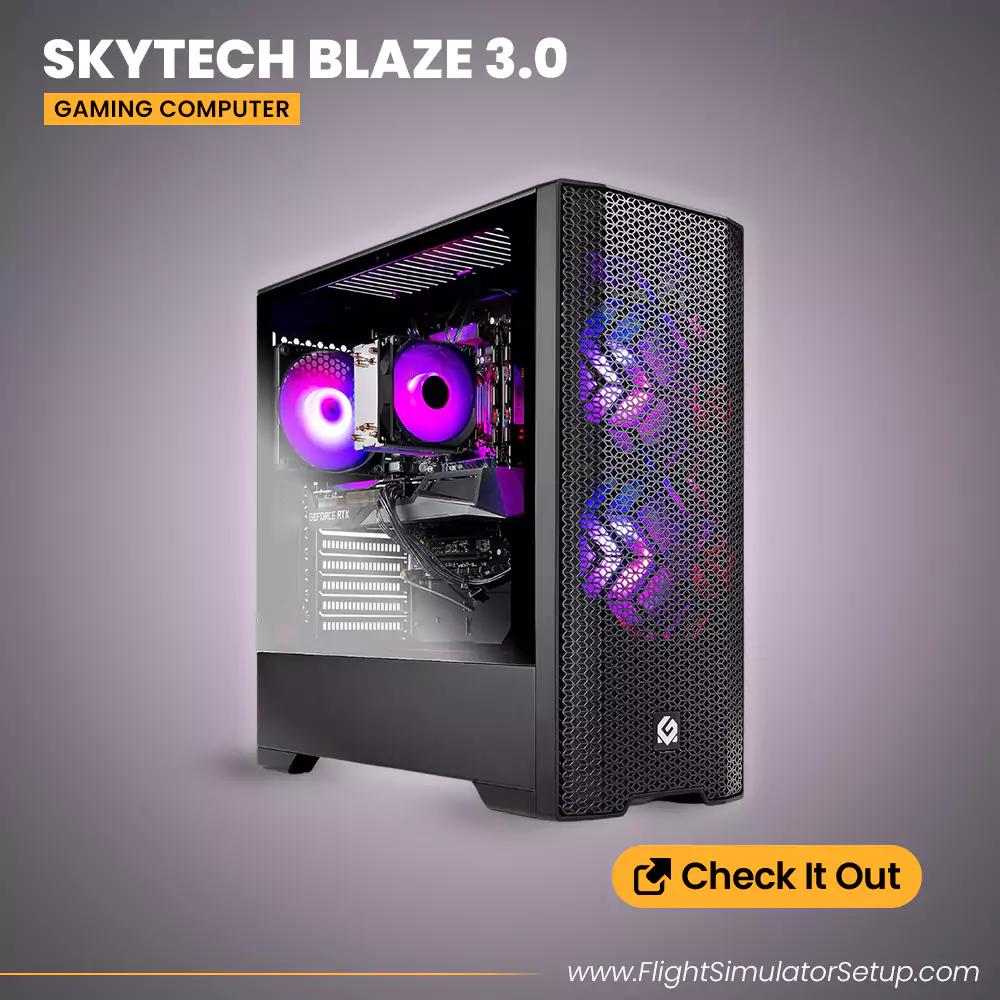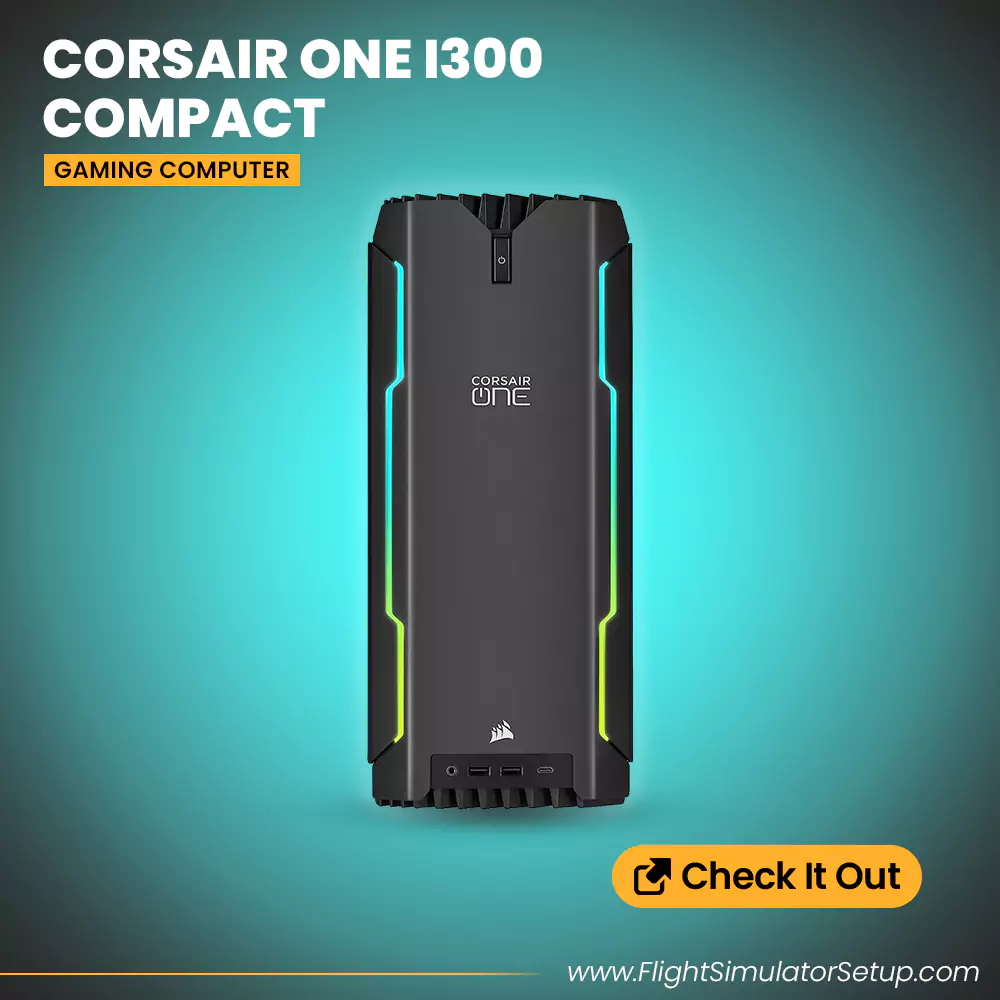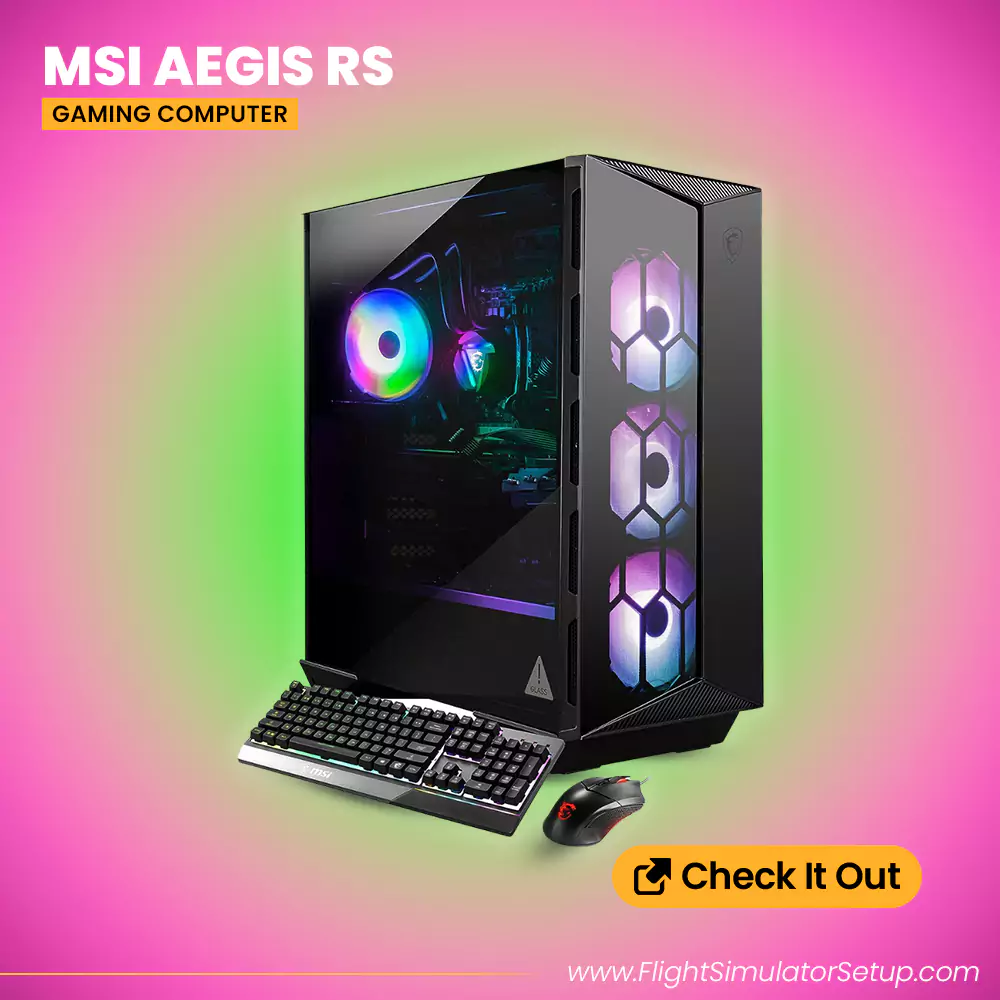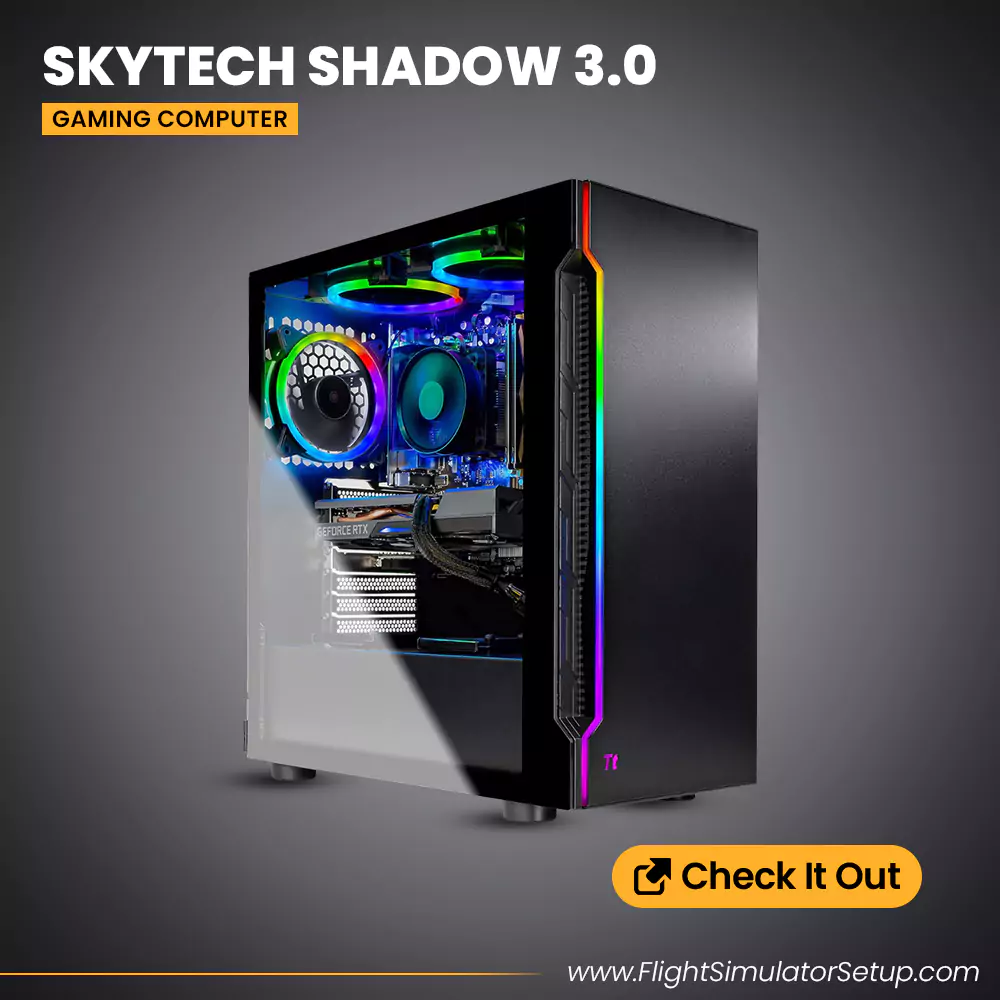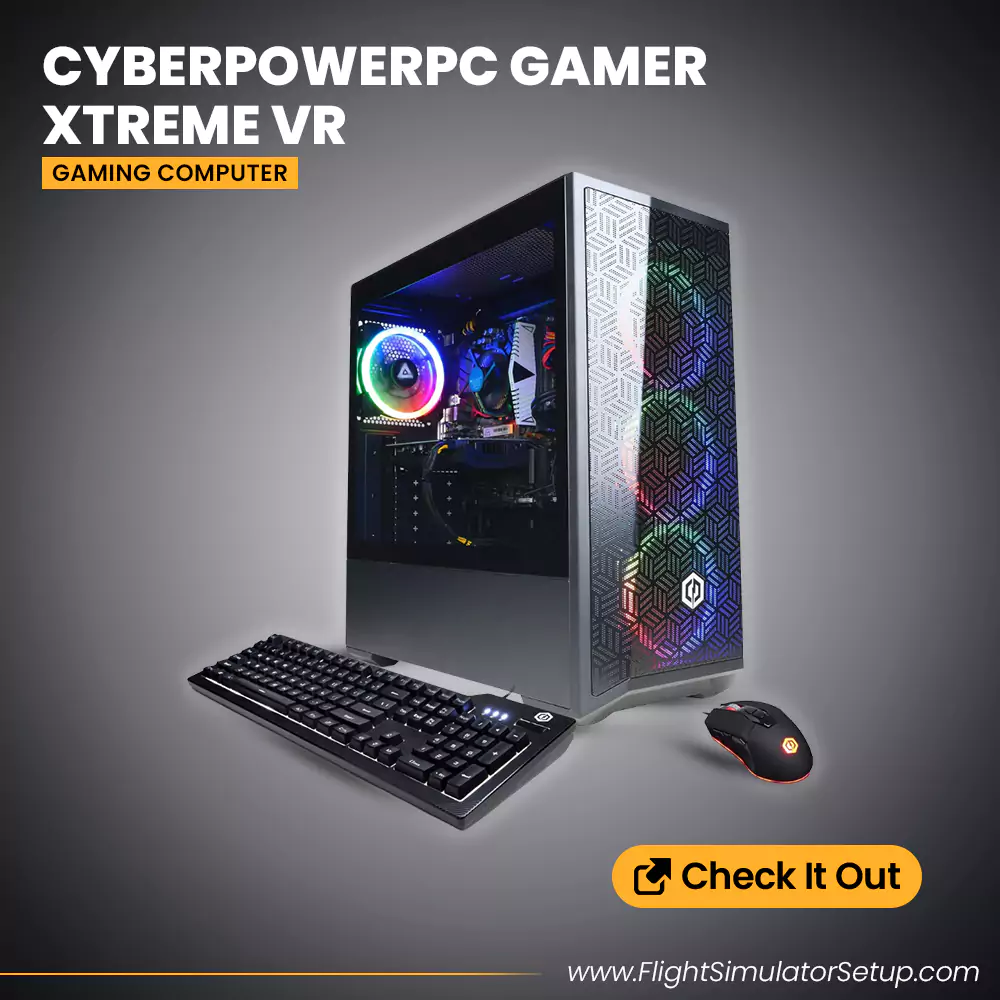When Microsoft released its master-piece Flight Simulator in 2020, it blew away everyone with its graphics- simmers, critics, and most importantly, computers. Due to the lack of optimization, even the heavy rigs boosting the best graphic cards found it difficult at the highest settings. With the passage of time, things have improved and the game has undergone hardware optimizations and chips are more powerful than they were ever. But one thing has not changed, however, is that you will still need a powerful rig as obvious by the system requirements mentioned below.
| System Requirements | Minimum | Recommended |
| CPU | Intel Core i5-4460 or AMD Ryzen 3 1200 | Intel Core i5-8400 or AMD Ryzen 5 1500X or better |
| RAM | 8 GB | 16 GB |
| Video Card | Radeon RX 570 or GeForce GTX 770 | Radeon RX 590 or GeForce GTX 970 |
| Video RAM | 2 GB | 4 GB |
| Storage | 150 GB | 150 GB |
| Operating System | Windows 10 64-bit | Windows 10 64-bit |
If you are planning to purchase, you can opt for either pre-built or custom options. Traditionally pre-built PCs have had the advantage of convenience as compared to custom PC’s flexibility and cost-effectiveness. The cost difference, however, has diluted over the last couple of years owing to the covid-induced chip shortage. So in 2023, the lack of technical savvy or patience isn’t the only reason to opt for a pre-build PC; some pre-built PCs are actually cheaper than their custom-built counterparts.
Buying a pre-built PC may be more convenient than going DIY but it is hardly a trivial affair. With hundreds of models and thousands of configurations available, the process of scouring the internet for the right rig is like finding a needle in the haystack. We have got you covered though. With our expertise and experience, we have compiled a list of the best pre-built computers for Microsoft Flight Simulator 2020 so you don’t have to go through the trouble.
Note: Laptops are covered in a separate post!
The following guide covers up desktop computers for MSFS 2020. If you are looking for a laptop then you may check out another post we have covered: Best Gaming Laptops for Microsoft Flight Simulator 2020
5 Best Gaming PCs for Microsoft Flight Simulator 2020
The best pre-built/assembled desktop computers for Microsoft Flight Simulator in five different price ranges are reviewed below. It is worth mentioning that the reviews pertain to specified configurations and not the model in general. It is also pertinent to mention that the listed configurations are only rough estimates of the devices you may need to run Microsoft Flight Simulator seamlessly across various screen resolutions. In case, you want to opt for a different product, just look out for a similar, yet stable, configuration and you should be alright.
Presenting the Holy Grail of pre-built PCs, the Skytech Gaming PC gives you nothing short of perfection. With its components, this is the best rig for maximizing the MSFS2020 experience. Sure,you could find some cheaper options with less powerful components, but this baby right here is about spending once and then forgetting about buying a new PC for a while.
Design
The Skytech Azure Gaming PC boasts a classical build style with a solid-looking black colored case that has a glass side panel on the left and front sides, allowing gamers to enjoy the RGB lighting of the components inside the case. The mesh grater design beneath both glass panels also adds to the aesthetics of the case. Now some folks may not agree, but you can definitely see a hint of similarity between this rig and the Mac Pro, and if you are a fan of the Mac Pro, then you can compare the Skytech’s rig aesthetics to the latter. The package has a size of 23.25 x 20 x 13 inches which may be a little big for some folks, but hey, the bigger the case is, the more room it will allow you for upgrades and fans. The PC weighs about 42 pounds and would provide you with a workout warmup in case you carry and move it around.
Upgradeability
With this beast of a machine I am definitely SURE that you will not need any upgrades for a couple of years to come but hey, if you do decide to go for some extra RAM or maybe acquire a larger SSD, this PC can handle the upgrade and customization and with fair ease.
Performance
This rig consists of components that are cutting no edges. The Skytech Azure Gaming PC is more than capable of running Microsoft Flight Simulator 2020 on 4K Ultra graphics settings. The rig boasts an Intel core i9 13th gen with a base clock speed of 3GHz(which can be overclocked to 5.4GHz). It consists of a 32GB DDR5 RAM which is one of the fastest RAMs you can get in the market. The ram also consists of a Heat Spreader to aid in keeping the RAM itself cool as well.
As for the graphics it does NOT get better than an RTX 4090 which is the latest and the best gaming card out in the industry right now. The card is capable of absolutely shredding MSFS2020 at 4K resolution and maxed out settings on 60 FPS.
Last of all, the PC consists of 4 x RGB RING Fans which will allow you to maximize the air flow within the case keeping your component’s temperatures low and optimized for ensuring a smooth gameplay experience.
The CyberPowerPC is a solid gaming PC that will be able to provide you with a high FPS experience as well as it is highly upgradeable. The performance of this PC is that of a high-end gaming rig at a relatively lower cost compared to other PCs. Without further ado let’s dive into the details of this gaming PC.
Design
The CyberPowerPC has a unique and clean HYTE Y60 case with 3-Piece panoramic glass with 3-times more satisfying plastic wrap removal. The front and the right side of the PC have panoramic glass panels and are joined by another slim layer of panoramic glass. The back side and the left side of the PC have ventilation for proper air flow and intake. The package dimensions are 21.69 x 21.38 x 16.13 inches and the whole PC weighs around 46.6 pounds. The wider dimensions of the case allow for larger varieties of the RTX 4070 Ti to fit in easily.
Upgradeability
While this PC is not an enthusiast category PC it still allows for maximum upgradeability with its components. The motherboard Asrock Z690-C/D5 which will allow newer 12th or 13th generation upgrades. The motherboard has 4 DIMMs allowing you to put in as much RAM as you need. Similarly, the case includes a PCIE 4.0 Riser Cable allowing for half-height PCIE cards behind the throne of the vertical graphics card. The protective shroud is the first of its kind, made specifically for the Y60. The rig also has six fan slots allowing maximum airflow for lowering the component’s temperatures.
Performance
The CyberPowerPC has the latest Intel core i9 13th gen processor and the one of the best GPUs in the industry, the RTX 4070 Ti with 12GB of VRAM. To top it all off the rig has a 1TB fast SSD with the option of installing 3 x 2.5″ SSD in total. As the graphics card is an RTX 4070 Ti, it will allow you to play MSFS2020 at an average 60 FPS on ultra settings and 4K resolution. In summary, the rig will not cut any corners when it comes to optimizing the experience of the thrilling game, which is Microsoft Flight Simulator 2020.
The MSI Aegis RS is not far from being called “The King” of mid-end gaming PCs. This PC is definitely at the top of the mid-tier list. Since all of MSI’s PCs go through vigorous testing, the Aegis RS is built to last with its easy upgradeability, and we know MSI is not one to cut any corners in making their PCs.
Design
The Aegis RS 12 has a stunning appearance. When the laptop is turned off, it doesn’t look like much, but the first drop of RGB illustrates why MSI is recognized for its excellent lighting. When everything is lit up, the computer looks fantastic, and there’s even a dedicated LED button to modify the illumination if you don’t want to mess with software. The package dimensions are 16.93 x 8.46 x 17.72 inches, and it weighs around 30 pounds.
The illumination is so prominent because MSI packed the Aegis RS with fans. There are six in all, distributed across the front, top, and rear. This is excessive for fans, and they were a little noisy during testing, but they look fantastic. They’re MSI fans with frosted blades that allow the RGB to show through evenly. The addition of an angular front panel with an MSI badge in the center is the cherry on top, and it goes beyond looks.
Upgradeability
The MSI Aegis RS is built for versatility, allowing you to swap out anything you want. The motherboard is a MSI Z790, allowing for newer generations like 12th and 13th to be swapped in. MSI provides all of the extra connections for the modular power supply in the box, and the system has a GPU support bracket, so you can throw in a heavy graphics card without worrying about sagging later on. Storage should not be an issue because there are slots for two 2.5-inch and two 3.5-inch drives.
Performance
The MSI Aegis RS is packed with an Intel Core i7 13th Gen and an RTX 4070 with 12 GB of VRAM. The PC may be a bit pale in comparison to the ones listed before it, but make no mistake, as it consists of more power than specified by the recommended requirements of MSFS2020. Since the game is old and the hardware being used in this PC is the latest and most up-to-date, the MSI Aegis RS does not fall behind in the PC master race with its juicy specs. The rig is capable of giving an average of 60 FPS on maxed-out settings and 4K resolution on MSFS2020.
As the requirements of the game are a bit demanding, the options for buying a good become a bit narrowed down. But do not worry, as we have you covered with the Cooler Master HAF 5 Pro which gives the best value for its price. Not only does it meet the requirements of MSFS2020 but it also allows you to have a better experience than most PCs of the same value.
Design
The HAF 5 Pro consists of a tempered-glass panel on the left side, a painted steel sheet on the right, and a mesh face panel in the front. The last part is two large 200mm intake fans that provide a dramatic presence to the airflow idea. The package dimensions are 20.08 x 8.82 x 20.32 inches and weighs around 31 pounds.Cooler Master repurposes the front-panel reset button as an RGB controller mode selection, surrounds the power button with an LED power-on indication ring, conceals the drive-activity LED behind a pinhole, and lowers front-panel audio ports to a single combo jack.
Upgradeability
The Cooler Master HAF 5 Pro is renowned for its exceptional upgradeability, making it a top choice for enthusiasts and power users. With its spacious interior and modular design, the HAF 5 Pro provides ample room for future hardware expansions. The versatile layout accommodates various motherboard sizes, allowing seamless upgrades to the latest technologies. The tool-less drive bays and cable management system simplify the process of adding storage and maintaining a clean interior. Furthermore, the HAF 5 Pro’s airflow optimization and support for advanced cooling solutions ensure that even as hardware demands evolve, users can effortlessly integrate enhanced cooling configurations to keep up with the latest performance demands. Its commitment to upgrade-friendly features solidifies the Cooler Master HAF 5 Pro as a durable and adaptable chassis choice that can effortlessly grow alongside evolving computing needs.
Performance
With the fearsome RTX 3060 Ti and Intel’s revolutionary i7 12th Gen CPU, the Cooler Master HAF 5 Pro emerges as a real performance titan. This combination creates a symphony of raw power and visual brilliance, assuring smooth frame rates and gorgeous visuals. The HAF 5 Pro lays the groundwork for future upgrades with its broad motherboard compatibility, which supports ATX, micro-ATX, and E-ATX motherboards. Its roomy interior and effective cable management facilitate hardware extensions while keeping the internals orderly and easily upgradeable. The HAF 5 Pro absolutely shines in the game Microsoft Flight Simulator 2020 at 4K settings. The ray tracing features of the RTX 3060 Ti improve game realism, while the Intel i7 12th Gen CPU ensures fast performance. Even in the midst of flight physics complexities and gorgeous scenery, the HAF 5 Pro maintains great frame rates, giving an immersive experience that demonstrates its power. The Cooler Master HAF 5 Pro is a testimony to upgradeability and high-end performance for those looking for a future-proof gaming powerhouse that succeeds now and welcomes tomorrow.
For the best budget and best performance for the budget price, we have decided to go with Skytech Blaze 3.0. For anyone looking to play MSFS2020 in the cheapest alternative available, this is the go to rig for them.
Design
A remarkable aesthetic beauty, the Skytech Blaze 3.0 expertly combines unquestionable raw power with stylish grace. Its understated design conceals an extremely powerful piece of gaming equipment that doubles as a statement piece and a technical powerhouse. The chassis exudes quiet elegance with its clean lines, delicate curves, and refined color palette. The dimensions of the rig are 22.83 x 21.65 x 13.07 inches and it weighs almost 30 pounds. Transparent side panels provide a tantalizing view inside the beautifully built interior, highlighting the spectacular ballet of RGB lighting that matches the elegant façade.
Upgradeability
The PC gives you three options of different upgrades. The Skytech Blaze 3.0 redefines upgradeability with precision engineering and expandable prowess. Its spacious chassis, equipped with multiple drive bays and PCIe slots, ensures adaptability to future hardware advancements. With support for up to 64GB of DDR4 RAM and compatibility with the latest graphics cards, including NVIDIA RTX series, the Blaze 3.0 stands ready to elevate gaming performance. The motherboard’s cutting-edge chipset further accommodates higher data transfer speeds, while its tool-free design simplifies component swaps. These features combine to create a system that not only offers a current-generation experience but also guarantees a smooth transition to tomorrow’s innovations, making the Skytech Blaze 3.0 a benchmark in upgrade-friendly gaming rigs.
Performance
The Skytech Blaze 3.0 Gaming PC Desktop stands out among competitors as a cost-effective gaming PC, providing a practical way to enjoy Microsoft Flight Simulator 2020’s marvels. With an NVIDIA RTX 3060 graphics card and an Intel Core i5 12400F CPU running at 2.5 GHz, this machine gives you access to the virtual skies without breaking the budget. The 16GB DDR4 RAM running at 3200 MHz offers a fluid background for managing both the intricate physics of flight and the magnificent sights that appear below your aircraft.
In Microsoft Flight Simulator 2020 at the highest settings (extreme) on a 1080p resolution, the performance of the Skytech Blaze 3.0 Gaming PC Desktop with an Intel Core i5 12400F and NVIDIA RTX 3060 may differ based on the scene, the weather, and other variables. As Microsoft Flight Simulator 2020 is a difficult game that even high-end computers might struggle with at maximum settings, you can typically expect to obtain around 30-45 frames per second (FPS) on average with sporadic variations.
Previously Reviewed Desktops for MSFS 2020
The following PCs were reviewed in the previous versions of the article. We are keeping them on the list for those folks who are looking to buy slighter older generations.
With some configurations well north of $5000, Corsair’s flagship gaming desktop is out of reach of most people. Yet, if you find yourself amongst the lucky few who can and are willing to splash a small fortune on a gaming PC, don’t look beyond the Corsair ONE i300; you get exactly what you pay for and maybe more.
Design
Corsair ONE i300 has a rather distinctive look. For starters, it is unbelievably compact. The 12-litre chassis measures 380 x 176 x 200 mm (14.96 x 6.93 x 7.87 inches), which is undeniably console territory. More conventional desktops, like the Omen 45L, are almost twice as big. Secondly, the Corsair ONE i300 isn’t as flashy as some of the other PCs going around; in fact, it is quite good. The chassis features a brushed metal design with an understated Corsair ONE logo just north of the center. The logo is flanked by a customizable RGB strip on either side which pairs up to add just the right amount of attraction. All in all, the chassis is pretty eye-catching; I would say, it has a classic look.
The simple design includes so many buttons and ports. While the power button, audio jack, a couple of USB-A ports, and a USB-C port find themselves on the front panel, others are located at the rear. They include but are not limited to, a couple of Thunderbolt 4 ports, an additional six USB Type-A ports, 7.1 audio, a 2.5G Ethernet port, three DisplayPort inputs, and an HDMI port.
For airflow, the Corsair ONE i300 has triangular cutouts along the sides and a large fan on top. The fan is responsible for exhausting air out of the system and keeping it cool. The CPU and GPU are water-cooled so the fan does all the hard work.
To open the rig and get access to inside items, you will have to press the button on the rear, pull the top, gently remove the fan, unscrew the side panels, and then lift the side panels out of the housing. At the risk of stating the obvious, the process is quite frustrating and, if you are looking to upgrade, often unyielding. Corsair’s ONE i300 swaps out upgradeability for compactness. You may be able to switch SSDs, but that’s often the full extent of your power.
Performance
With a 16-core Alder Lake processor, RTX 3080, and 32 GB of blazing-fast DDR5 memory, it is not hard to imagine a buttery-smooth frame rate on Microsoft Flight Simulator. We were tempted to opt for a beefier configuration of the system featuring 64 GB of RAM and a slightly more impressive RTX 3080 TI, but we figured the configuration was overkill. The recommended configuration churns out decent frame rates at all settings and outperforms some of the best PCs going around such as Alienware Aurora R13, HP Omen 45L, Origin PC Millennium, and iBuyPower’s 12th gen gaming PC.
The rig packs some of the most powerful and power-hungry components into one of the most compact chassis which, more often than not, is the perfect recipe for disaster. Corsair ONE i300, though, does surprisingly well. For the majority of our testing duration, both the CPU and the GPU remained cool. The GPU maxed out at 75oC. CPU, on the other hand, was a bit more toasty and spiked up to 100oC. That, however, was a one-time occurrence. It is worth noting that when internal temperatures spike, the fan kicks in. It isn’t too distracting, but you definitely notice.
What is it about these Alienware PCs that has everyone, users and reviewers alike, helplessly gushing over them? Why is any Top 10 PC list incomplete without one of the many ubiquitous products that the company makes? Is it the high-end specification, the irresistible curves, or the sheer ability to fire up any game without having to dial down the settings? Maybe, a mix of them all. If so, the company seems to have nailed down its target audience with Its latest offering, the Alienware Aurora R14. Big, beautiful, and beastly, the rig comes across as a love letter to the fans, and is consequently, our choice for the best high-end PC for MSFS 2020.
Design
Alienware Aurora R14 is housed in the new Legend 2.0 chassis giving it a tubular shape with an oblong face. The all-black tubular case is inclined towards the backside, making the chassis more capacious. Rather interestingly, the R14 is still lighter than its predecessors, standing at 36.4 pounds. For context, the R11 weighed 39 pounds.
Another major update to the cosmetics concerns side panels. The left-hand plastic panel has been swapped for a tapered glass one, revealing the innards. The glass panel along with customizable RGBs makes for a truly spectacular viewing that banks on a blend of subtlety and showmanship.
Aesthetics aside, the design changes have had numerous positive implications. For starters, the redesigned chassis offers a 50% boost in internal space, improving both airflow and upgradeability. Increased internal space, in turn, allows for bigger components, future-proofing your investment. Improved airflow, on the other hand, combines with liquid cooling to keep temperatures in check.
Other positive design improvements include but are not limited to, the introduction of an optional back cover for cable management and the return of the ‘toolless access’ mechanism. To be fair though, it is hardly toolless if you need a screwdriver.
Performance
The selected Aurora R14 configuration packs AMD Ryzen 9 5900, NVIDIA GeForce RTX 3080, 32 GB of memory, 1TB SSD, and 2TB HDD. Microsoft Flight Simulator may be a hardware-intensive title, but that’s one beefy PC! Aurora R14 blows MSFS 2020 out of the water at 1080p and 1440p. There is a slight drop at 4K, but nothing that’s not manageable with a slight dial-down in settings.
I was particularly blown away by how cool the system stayed under intense workloads. During testing, the temperatures fluctuated in the 74-77oC range for the GPU and rarely went into the 80s or the dreaded 90s. There was this minor infraction with the CPU temperature spiking to 88oC, but that’s just about it.
The cooling, however, comes at a cost. Fans are loud, so much so that you may feel guilty about soaring the skies in the presence of other people. Nighttime is definitely worse, and while noise-canceling headphones work, Alienware should have done better.
MSI’s mid-tier Aegis RS Gaming Desktop is the best pre-built PC for 1440p resolution in MSFS 2020 but more importantly your answer to how many MSI components can fit inside a case.
DesignHoused in MSI’s MPG Gungnir 110M mid-tower chassis, the Aegis RS Gaming Desktop is a stunning piece of hardware. The tapered slide glass panel and the uniquely-split front panel ensure full expression of RGB while the opaque residuals hide away the messy wiring that could potentially hinder aesthetics.
Stunning as it may be, the design is hardly unique when the rig is turned off. It’s when the PC is turned on that the rig is at its most magnificent. This could be credited to MSI’s superb lighting and more specifically to its use of fans with frosted blades of which there are plentiful-the gaming desktop has six fans split across the front, top, and rear.
Rigs with tapered glass side panels often experience problems with airflow. Fortunately, that’s not the case with MSI Aegis RS owing to the open front panel that allows the air to spill through. With as many as six fans, the outflow was never going to be an issue. The front panel can support a 420mm radiator or 3 fans, while the roof can take in a 280mm radiator or 2 fans.
The chassis is roomy and houses standard components, opening up a realm of possibilities for future enhancements. The process of opening the rig to access inner components is far from hideous. All you need to do is unscrew thumbscrews from either side. So, on the upgradeability spectrum, I would put it anywhere between Omen 45L and Alienware Aurora R14.
The only major problem I had with the design was the movement of the dust filter which created a subtle buzz whenever the machine was in action. The filter sits atop 3 fans with a very small gap in between, leading to a horrendously-annoying buzzing sound. To make do, I had to stuff a piece of paper in between and the noise went away, so it wasn’t as big a deal. MSI, though, should have done better.
Performance
The recommended configuration pairs Intel’s i7-12700KF with Nvidia’s RTX 3060 Ti which may not be the flagship products of their respective companies but aren’t far behind either. Intel’s i7-12700KF, for its part, is marginally behind i9-12900K and goes almost toe-to-toe with Ryzen 9 5900X. Similarly, the RTX 3060 Ti hits the sweet spot between performance and value, allowing you to soar in the sky without putting a dent in your bank account. To top it off, the recommended build is equipped with 16 GB of blazing-fast DDR5 memory, 1 TB NVMe SSD, and an MSI Pro Z690 motherboard that empowers you to overcome your chips’ performance barriers.
My only performance-related grievance is the noise. Six fans are one too many, especially when they are responsible for a persistent humming sound. To its credit, though, MSI’s build doesn’t get too loud under intense workloads.
If you are looking for a reasonably-priced rig to immerse yourself in Microsoft Flight Simulator 2020 without having to cut a lot of corners, SkyTech’s offering is hard to miss.
Design
With a tapered glass side panel allowing you to see the innards and plentiful RGB lighting, the Skytech Shadow 3.0 supports a familiar look. It is sleek nonetheless, with accent lighting providing the much-needed oomph to a rather minimalistic front panel. It also helps that the RGB lighting is customizable, so you can switch between a host of lighting options ranging from static cyclic colors to full RGB.
SkyTech’s rig is housed in a standard black case with excellent airflow. This could be attributed to the 3 RGB-lit ring fans split across the top and rear. The former are protected from dust via an easy-to-access dust filter, so maintenance isn’t much of an issue.
SkyTech’s offering comes across as tidy and is exactly that for the most part, except for cable management which would have you lamenting your big hands. Once you get the hang of it, though, switching components shouldn’t be a hassle. The rig provides easy access to the innards, although I wouldn’t go as far as calling it toolless. All in all, no major issues as far as design is concerned.
Performance
With a 6-core AMD Ryzen 3600 and Nvidia’s RTX 3060, SkyTech’s rig offers stellar performance in Microsoft Flight Simulator across both 1080p and 1440p resolution. You will have to cut a few corners with the latter, but the rig is up to the challenge for the most part. In reference to memory and storage, I believe 16 GB and 1 TB are just about right. Sure ideally, I’d prefer 32 GB RAM and 2 TB storage, but the rig will get the job done unless you go berserk with add-ons.
If you are new to the world of simming and/or do not have the resources for a high-end build, only a few options would be better than CYBERPOWERPC’s Gamer Xtreme VR Gaming PC. Buy it today and upgrade at your convenience.
Design
With regards to aesthetics, CYBERPOWERPC Gamer Extreme is hardly spectacular. Sure, it has a tapered glass side panel, a fair share of RGB, and checks all boxes of over-the-top gaming aesthetics, but it is borderline ugly. This could just be the opinion of one man, but that one man finds the front rectangular panel with meshwork absolutely hideous and nothing would convince him otherwise.
Fortunately for Gamer Extreme, however, aesthetics aren’t as important as performance and in that regard, the mesh design plays its part to perfection. Alongside the 4 fans (3 in the front and one in the rear), it manages airflow and helps keep the chips from frying.
The case is compact but spacious ensuring sufficient room for updates. I was particularly impressed by how neatly organized the interior was. There were no messy wiring or twist ties to hold it together. This sounds even more impressive when you take into consideration some of the costlier and messier builds on this list. So, full marks for upgradeability.
Performance
The CYBERPOWERPC Gamer Extreme is powered by Intel Core i5-11400F and GeForce RTX 3050 which may not make heads turn but are pretty decent components that would ensure a buttery-smooth 60+ fps on 1080p. The same, however, can not be said for 8 GB of memory which will inevitably become a bottleneck in your gaming experience. Over time, updates and add-ons will exhaust the 500 GB of disk space as well, so you will have to upgrade. That could be a deal-breaker, but the Gamer Extreme classifies as an entry-level PC. You buy it today and upgrade when you have the resources to do so.
Conclusion
Owing to the persistent ship shortage, buying a pre-built PC is the best option for most people. If you are one of those people and looking for a PC to soar the skies with Microsoft Flight Simulator, you should opt for one of Corsair ONE i300, Alienware R14, MSI Aegis RS, SkyTech Shadow 3.0, and CYBERPOWERPC Gamer Xtreme based on your budget and flight requirements. All the aforementioned desktops meet the minimum requirements of the hardware-intensive AAA title and offer stellar performance during gameplay.
Hey there, I’m your host at FlightSimulatorSetup.com! With a deep love for all things aviation, I’ve spent years immersed in the world of flight simulation. My mission? To share my expertise and help you pick the perfect flight sim hardware for an incredible flying experience. Let’s take off together!

